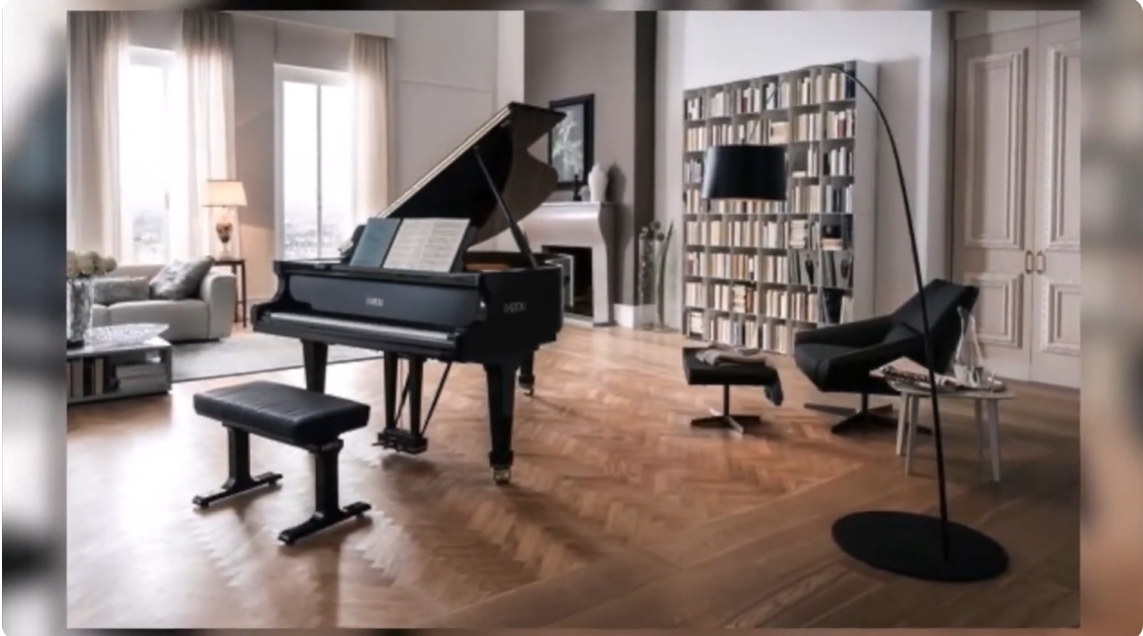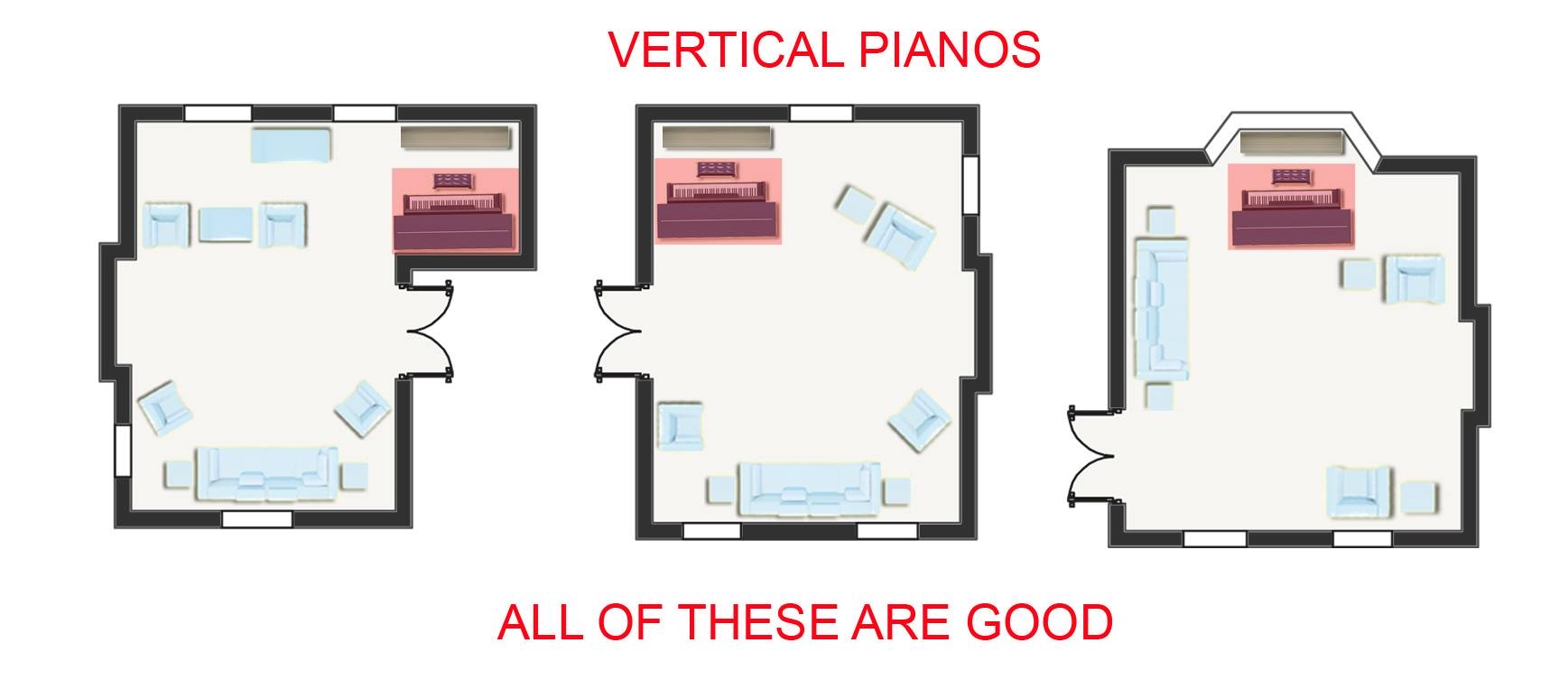Have you ever wondered where the best spot for your piano is in your home? Choosing the right place can make all the difference, not just for the acoustics, but also for the mood and functionality of your living space.
You want your piano to be a harmonious addition, not a cumbersome obstacle. This decision might seem daunting, but it’s easier than you think. Imagine walking into a room where your piano invites you to play, rather than feeling like it’s hiding away in a corner.
As you read on, you’ll discover simple tips and insights that will help you find the perfect location, transforming your piano into a centerpiece that enhances your home’s ambiance. Let’s make sure your piano finds its rightful place, so it can truly become the heart of your house.
Table of Contents
ToggleRoom Selection
Choosing the right room for your piano can make a world of difference in your home. The placement not only affects the sound quality but also the atmosphere of the space. Let’s dive into some practical options for room selection, considering where your piano will be most appreciated and used.
Living Room Placement
The living room is often the heart of the home. Placing your piano here can create a welcoming environment for family gatherings and social events. Imagine the joy of playing your favorite tunes while loved ones listen nearby.
Consider positioning the piano near a window for natural light, but ensure it’s not exposed to direct sunlight to protect the instrument. A corner placement can be ideal, providing a cozy nook for music lovers without dominating the space.
Music Room Setup
If you’re serious about your music, dedicating a room solely to your piano can be a game-changer. A music room offers a focused environment for practice and creativity. Think about adding soundproofing elements to minimize disturbance to other rooms.
Personalize this space with inspiring decor that fuels your passion. Hang art pieces that reflect your musical journey or place a bookshelf with your favorite sheet music. You might even find this room becoming your retreat.
Multi-purpose Spaces
Not everyone has the luxury of extra rooms, so consider integrating your piano into a multi-purpose space. Perhaps your home office or dining area can double as a musical haven. This approach keeps your home functional while still celebrating your musical interests.
Reflect on how you use these spaces daily. Can you envision transitioning from work to music seamlessly? A piano in a shared space can inspire spontaneous creativity and offer a quick escape from routine tasks.
Where will your piano find its home? The possibilities are endless, but the choice is yours. Whether nestled in the living room or a dedicated music room, the right placement can enhance both your home and your musical experience.
Acoustic Considerations
Placing a piano in your home involves several important acoustic considerations. The right spot can enhance sound quality and listening experience. Proper placement can also prevent disruptions to your household or neighbors.
Sound Dynamics
The room’s size and layout affect how the piano sounds. Larger rooms allow sound to travel freely. They help in producing a rich and full tone. Small rooms might amplify sound too much, leading to distortion. Consider furniture placement too. Soft furnishings absorb sound, reducing echo.
Flooring Impact
Flooring material plays a crucial role in acoustics. Hardwood floors reflect sound, creating a brighter tone. Carpeted floors absorb sound, making it warmer and softer. Balance is key. Too much absorption can dull sound, while too much reflection can make it harsh.
Ceiling Height And Shape
Ceiling height influences sound dispersion. High ceilings allow sound to rise and spread evenly. Low ceilings can trap sound, causing muddiness. Ceiling shape matters too. Vaulted ceilings can create unwanted echoes. Flat ceilings offer a more balanced sound distribution.
Temperature And Humidity
Properly placing your piano in your home is not just about aesthetics; it’s about ensuring the instrument’s longevity and performance. Temperature and humidity play a crucial role in maintaining your piano’s condition. Inappropriate levels can lead to tuning issues and even damage the wood or strings. Let’s explore how you can safeguard your piano from these elements.
Avoiding Direct Sunlight
Direct sunlight can be harsh on your piano. It can cause the wood to fade and dry out, leading to cracks. Try placing your piano away from windows or use curtains to block direct rays.
Consider the room’s layout. You might think a sunny corner looks beautiful, but it could be detrimental. Reflect on how sunlight moves through your space throughout the day.
Heating And Cooling Systems
Heating and cooling systems can create fluctuating temperatures that harm your piano. Avoid placing it near radiators, heaters, or air conditioning vents. These can cause the wood to expand and contract, affecting sound and structure.
Think about the room’s airflow. Does your piano feel a draft when the system is on? Adjust the vents or relocate the piano to a more stable environment.
Humidity Control Solutions
Humidity levels should be consistent, ideally between 42% and 55%. Consider investing in a humidifier or dehumidifier to maintain this range. Sudden changes in humidity can cause the wood to swell or shrink, impacting the soundboard and tuning.
Is your area prone to seasonal humidity changes? Keep a hygrometer nearby to monitor levels. This simple device can be your piano’s best friend, alerting you to make necessary adjustments.
Some piano owners have found success with piano-specific humidity systems. Have you thought about this option? It might be worth exploring for peace of mind.

Credit: pianomoversoftexas.com
Space And Accessibility
Choosing the perfect spot for your piano requires thought. Space and accessibility are key. A well-placed piano enhances both sound and aesthetic. It also ensures ease of use. Let’s explore essential aspects.
Space Requirements
Pianos need ample space to sound and look their best. A grand piano requires about six feet of space. Upright pianos need less room, often fitting in tighter spaces. Ensure there’s enough room for the bench. Players should have freedom to move comfortably.
Ease Of Access
A piano should be easy to reach. Avoid placing it in a room that’s hard to get to. Consider the weight and size of the piano. Moving it frequently can cause damage. Place it where it can stay for a long time.
Traffic Flow
Consider the room’s traffic flow. Avoid placing the piano in a high-traffic area. This prevents accidental bumps and damage. Choose a spot that allows guests to admire the instrument. Ensure it doesn’t obstruct paths or doors.
Aesthetic Integration
Placing a piano in your home requires thoughtful consideration for both aesthetics and functionality. Ideally, the piano should become a centerpiece, harmonizing with the room’s decor and design. A corner near large windows can enhance its beauty, while ensuring optimal sound resonance and accessibility.
Placing a piano in your home is more than just finding a spot that fits. It’s about creating harmony between the piano and the rest of your living space. Aesthetic integration ensures that your piano doesn’t just sit in the room—it becomes a part of it, enhancing the overall look and feel of your home.
Matching Decor Styles
Think about the style of your home. Is it modern, classic, or perhaps eclectic? Your piano should reflect and complement this style. If your living room has a contemporary vibe, a sleek black or white piano can add a touch of sophistication. In a rustic setting, a wooden piano with a matte finish might blend seamlessly. Consider the existing colors and textures in the room. A piano can be a bold statement or a subtle addition. Matching it with other elements can create a cohesive look that’s pleasing to the eye.
Complementary Furniture
The piano is more than just an instrument—it’s a piece of furniture. Surround it with other pieces that make sense together. A cozy armchair or a stylish bench can provide comfortable seating for those listening or playing. A small side table can hold sheet music or a metronome, while also adding to the decor. Think about the overall layout. Does the furniture allow for easy movement around the piano? Ensuring a good flow can make the space feel inviting and functional.
Lighting Enhancements
Lighting can dramatically change the ambiance of a room. Consider how light interacts with your piano. Natural light can highlight the piano’s finish, making it a focal point during the day. In the evening, strategically placed lamps or overhead lights can create a warm, inviting glow. Adjustable lighting allows you to set the mood for different occasions. Whether it’s a bright light for practice or soft lighting for a casual gathering, the right illumination can enhance your piano’s presence. Have you ever noticed how a well-placed piano can transform a room? By paying attention to decor, furniture, and lighting, you ensure that your piano is not just an object but an integral part of your home’s aesthetic story. What changes will you make to harmonize your space?

Structural Support
Placing a piano in your home requires careful thought. Structural support is crucial. A piano’s weight and size demand strong foundations. Consider floor strength, weight distribution, and long-term stability.
Floor Strength
Floors must bear the piano’s weight. Wood floors can sag over time. Concrete floors offer better support. Check floor joists for strength. A professional can assess this. Ensuring a solid foundation prevents damage.
Piano Weight Distribution
Pianos don’t distribute weight evenly. They have heavy points. This can stress certain floor areas. Use a piano board to spread weight. This helps prevent floor indentations. Proper distribution prolongs floor life.
Long-term Stability
Long-term stability is vital for your piano. Over time, floors can shift or settle. Floors may develop cracks or unevenness. Regular inspections help detect early problems. Keeping your piano stable ensures its longevity.
Noise Management
Placing a piano requires careful consideration to manage noise effectively. Choose a room with carpet and curtains to help absorb sound. Avoid areas near bedrooms or shared walls to minimize disturbances.
Placing a piano in your house is not just about finding the right spot aesthetically; it’s also crucial to manage the noise it can create. Whether you’re a seasoned pianist or just starting, the sound of a piano can be both a joy and a disturbance. Noise management is key to ensuring harmony in your home and maintaining good relationships with neighbors.
Soundproofing Techniques
Consider adding soundproofing materials to the room where your piano will reside. Acoustic panels on the walls can significantly absorb sound, reducing the echo and loudness. Heavy curtains and thick carpets not only add to the decor but also help muffle the sound. Another effective method is using weatherstripping around windows and doors to prevent sound leakage. Adding a rug underneath the piano can also absorb vibrations and reduce noise. These small changes can make a big difference in managing sound levels.
Respecting Neighbors
Think about your neighbors’ comfort when choosing a spot for your piano. If you share walls, avoid placing the piano against them. Instead, opt for an interior wall that’s away from shared spaces. Consider the time of day when you practice. Playing during daylight hours is generally more acceptable. You might also want to talk to your neighbors to find out if there are specific times they prefer quiet.
Quiet Practice Solutions
If you’re worried about noise, explore quiet practice options. Digital pianos with headphone jacks allow you to play without disturbing anyone. Invest in a piano mute for your acoustic piano. It reduces the volume while still allowing you to play naturally. Are there specific pieces you’re practicing that are particularly loud? Try working on those with a practice pedal engaged to soften the sound. By implementing these noise management strategies, you can enjoy your music without worry. How can these changes improve not just your playing, but your overall living environment?

Credit: www.total-piano-care.com
Frequently Asked Questions
Where Is The Best Place To Put A Piano In Your House?
Place your piano in a room with stable temperature and humidity. Keep it away from direct sunlight, windows, and heat sources. Choose a spot against an interior wall to protect from external temperature changes. Ensure there’s enough space for optimal acoustics and easy access.
Where Not To Place A Piano?
Avoid placing a piano near windows, radiators, or air vents. Direct sunlight and temperature fluctuations can damage it. Keep it away from doors and high-traffic areas to prevent bumps and scratches. Humid environments or basements can affect its sound and structure.
Ensure stable flooring to support its weight.
Where Should A Piano Be Placed In A House Feng Shui?
Place the piano in the living room or creative space, enhancing positive energy flow. Ensure it faces east for growth and inspiration. Avoid corners or cramped areas, allowing free movement around the instrument. Balance with other elements to maintain harmony and improve the room’s acoustics.
Why Do So Many People Give Pianos Away For Free?
Many people give away pianos for free due to their large size and high moving costs. Owners may lack space, or the pianos might need repairs. Finding new homes for unused instruments can be challenging, leading to free giveaways. Giving them away avoids disposal fees and benefits others.
Conclusion
Choosing the right spot for your piano enhances both sound and decor. Consider light, space, and accessibility for optimal placement. Keep the piano away from direct sunlight to protect its finish. Ensure enough room for comfortable playing. Experiment with different locations to find the best acoustics.
A well-placed piano becomes a beautiful centerpiece in any home. The right location invites more music into your life. Enjoy creating harmonious melodies in your personal space. Make sure your piano fits well with your room’s style and flow. Happy playing!

